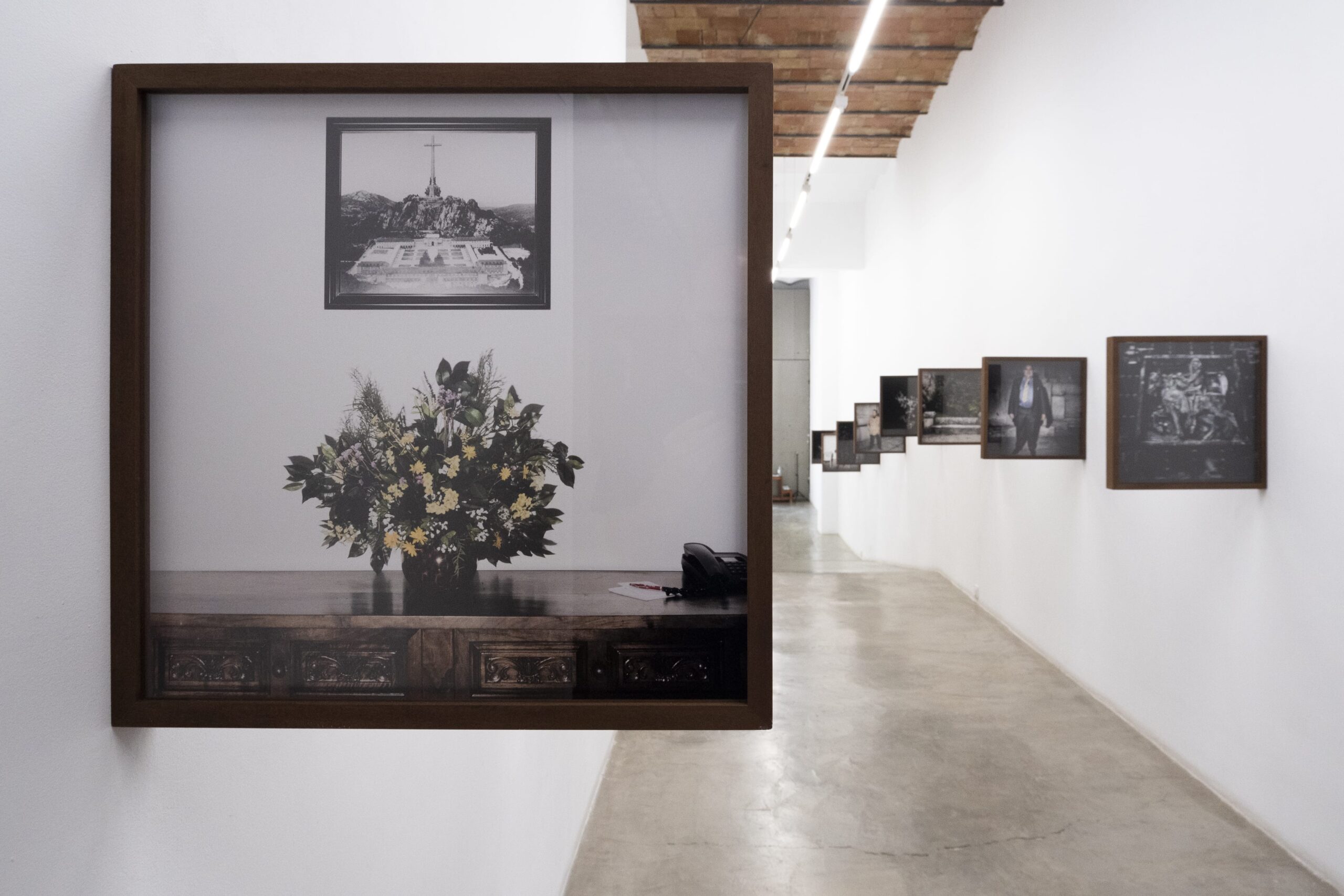Flowers For Franco | ORNAMENTO – Toni Amengual

Flowers For Franco | ORNAMENTO – Toni Amengual
The RocioSantaCruz Gallery simultaneously exhibits two series by Toni Amengual. In the central space of the gallery will be his Flowers For Franco series, a photographic exhibition that was presented for the first time at Es Baluard, museu d’art contemporani de Palma in 2021. In this work the author photographs what happens in the Valle de los Caídos, a site that has been the mausoleum of the dictator Francisco Franco since his death in 1975 until 2019, the year in which the mummy was moved to the Mingorrubio cemetery so that it would not share the same place as the thirty-three thousand victims of the Spanish civil war that are still buried there. It was precisely in 2019 when Amengual released the Flowers For Franco photographic series in photobook format, selected by TIME Magazine among the thirty best photobooks of the year.
The design of the exhibition that is now presented in the Gallery is the work of Lucía Peluffo (artist and exhibition designer). The photographs are presented perpendicular to the wall and with their backs to the entrance of the room. Thus, those who visit the exhibition are required to make an effort to be able to see the images and have to look from another perspective. The idea behind this installation is to see what is hidden from us and how we relate to our past and the taboo that Francoism supposes in our society.
On the other hand, a second series by Amengual, ORNAMENTO, is exhibited in the bookstore area. Made during his stay at the Academy of Spain in Rome (2021), 9 photographs of the broken genitals of classical statues are shown. Once again Amengual plays with the taboo, which can be uncomfortable to watch. With this series, the author proposes a reflection on inherited masculinities, on the constructed imaginary of what a man is and should be. And in this construction the biblical story of Adam, Eve and the tree of wisdom has played a crucial role. It is no accident that the amputation of penises from classical statues was ordered by Roman emperors converted to Christianity. These two series, which seem very distant from each other, share the fact that, through the author’s gaze, a questioning is generated about how the past configures us and how the construction of images; on the one hand, the architecture of a place like the Valle de los Caídos, and on the other the statues and their premeditated breakages end up functioning as systems of social control.
Press:
– Interpel·lar amb la mirada. Conxita Oliver. El Temps de les Arts. 12.08.22